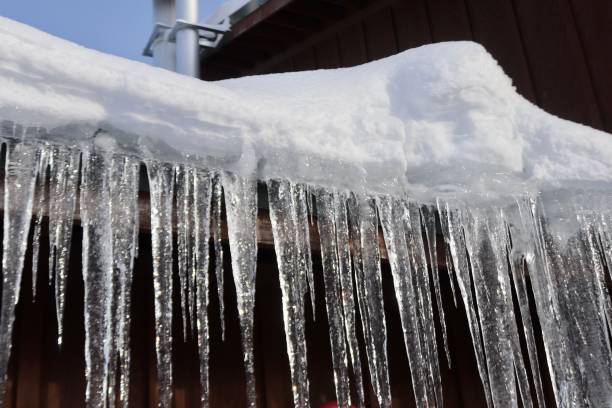Just about every person will have their own opinions involving How to prepare your home plumbing for winter weather.

Cold weather can wreak havoc on your pipes, particularly by freezing pipelines. Here's exactly how to avoid it from happening and what to do if it does.
Intro
As temperature levels decrease, the risk of frozen pipelines rises, potentially bring about expensive repairs and water damages. Comprehending exactly how to prevent frozen pipes is critical for house owners in cold climates.
Comprehending Frozen Pipes
What triggers pipes to freeze?
Pipelines freeze when exposed to temperatures below 32 ° F (0 ° C) for prolonged periods. As water inside the pipelines ices up, it increases, putting pressure on the pipeline walls and potentially causing them to burst.
Dangers and damages
Frozen pipelines can bring about water supply interruptions, residential property damages, and expensive repair work. Ruptured pipelines can flood homes and trigger substantial structural damages.
Signs of Frozen Pipeline
Identifying icy pipelines early can stop them from bursting.
Just how to recognize icy pipes
Search for decreased water circulation from faucets, uncommon odors or sounds from pipes, and noticeable frost on revealed pipes.
Avoidance Tips
Insulating prone pipelines
Cover pipes in insulation sleeves or use warm tape to secure them from freezing temperatures. Focus on pipelines in unheated or outside locations of the home.
Heating strategies
Maintain indoor spaces effectively warmed, especially locations with pipes. Open cabinet doors to enable warm air to flow around pipelines under sinks.
Shielding Exterior Plumbing
Yard hoses and outdoor taps
Detach and drain pipes yard hoses before winter season. Set up frost-proof faucets or cover exterior faucets with insulated caps.
What to Do If Your Pipes Freeze
Immediate actions to take
If you suspect frozen pipes, maintain faucets available to alleviate stress as the ice thaws. Make use of a hairdryer or towels soaked in hot water to thaw pipes slowly.
Long-Term Solutions
Architectural changes
Think about rerouting pipelines away from outside walls or unheated locations. Add extra insulation to attics, basements, and crawl spaces.
Updating insulation
Invest in top quality insulation for pipes, attics, and wall surfaces. Appropriate insulation assists keep consistent temperatures and decreases the danger of frozen pipelines.
Final thought
Protecting against icy pipes needs proactive actions and quick actions. By recognizing the reasons, signs, and safety nets, homeowners can protect their pipes throughout cold weather.
5 Ways to Prevent Frozen Pipes
Drain Outdoor Faucets and Disconnect Hoses
First, close the shut-off valve that controls the flow of water in the pipe to your outdoor faucet. Then, head outside to disconnect and drain your hose and open the outdoor faucet to allow the water to completely drain out of the line. Turn off the faucet when done. Finally, head back to the shut-off valve and drain the remaining water inside the pipe into a bucket or container. Additionally, if you have a home irrigation system, you should consider hiring an expert to clear the system of water each year.
Insulate Pipes
One of the best and most cost-effective methods for preventing frozen water pipes is to wrap your pipes with insulation. This is especially important for areas in your home that aren’t exposed to heat, such as an attic. We suggest using foam sleeves, which can typically be found at your local hardware store.
Keep Heat Running at 65
Your pipes are located inside your walls, and the temperature there is much colder than the rest of the house. To prevent your pipes from freezing, The Insurance Information Institute suggests that you keep your home heated to at least 65 degrees, even when traveling. You may want to invest in smart devices that can keep an eye on the temperature in your home while you’re away.
Leave Water Dripping
Moving water — even a small trickle — can prevent ice from forming inside your pipes. When freezing temps are imminent, start a drip of water from all faucets that serve exposed pipes. Leaving a few faucets running will also help relieve pressure inside the pipes and help prevent a rupture if the water inside freezes.
Open Cupboard Doors
Warm your kitchen and bathroom pipes by opening cupboards and vanities. You should also leave your interior doors ajar to help warm air circulate evenly throughout your home.

I'm very fascinated by Prevent Frozen Pipes and I really hope you liked my blog post. Those who enjoyed our blog posting plz be sure to share it. Thanks for your time. Don't hesitate to check our blog back soon.
Article